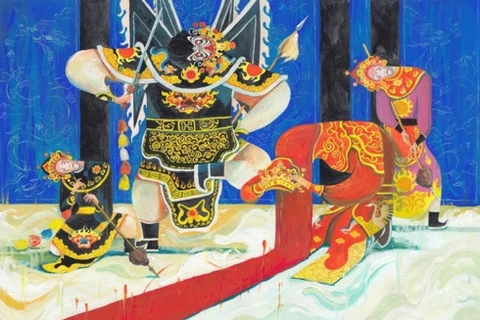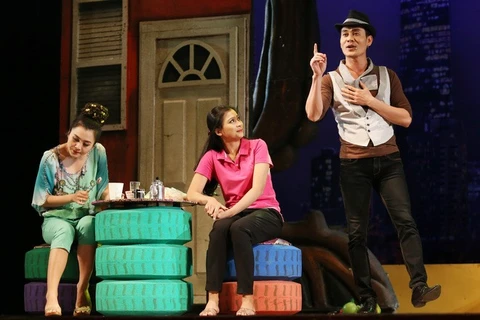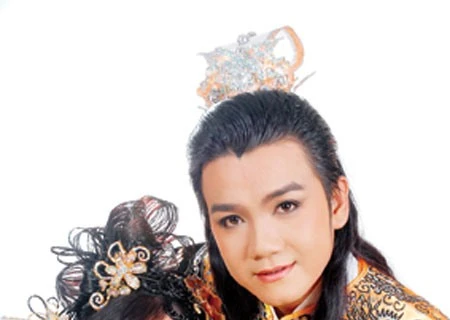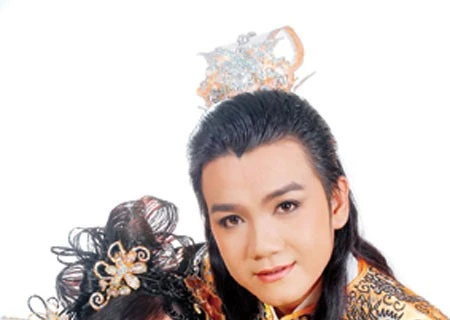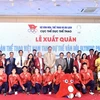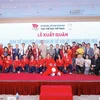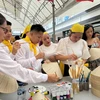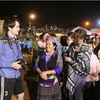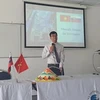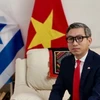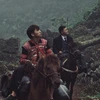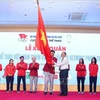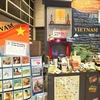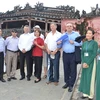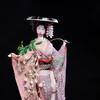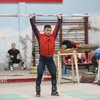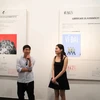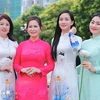Hanoi (VNA) – How to attract audiences back to theatres remains a big question facing those who love Cai luong (reformed opera), a traditional art originating in southern Vietnam.
Cai luong is the convergence of southern Vietnamese folk songs, classical music, tuong (traditional opera) and modern spoken drama.
About 100 years ago, authors like Ho Bieu Chanh and Dang Thuc Lieng introduced Cai luong to the public. Chanh and his friend set up Cai luong troupes that staged performances across Sai Gon (now Ho Chi Minh City), and western provinces.
The birth of Cai luong had enriched people’s spiritual life, becoming the most popular art genre at that time, especially during the 1960s.
Between 1975 and 1990, Ho Chi Minh City was home to more than 20 Cai luong troupes that performed at 15 theatres, with each attracting thousands of audiences each night.
Cai luong was the first traditional art genre that had been introduced in Paris in the first half of the 20th century.
During the wars against French and American forces, Cai luong served as a spiritual weapon, helping to encourage people to join revolutionary movements, particularly in southern provinces.
However, over the past decades, Cai luong has been affected by impacts of globalization, the market economy and the robust development of information-technology.
Modern arts have gradually replaced folk genres, including Cai luong that is facing a shortage of human resources and good works. Besides, culture-related policies have failed to catch up with the development of the market economy due to its bottlenecks.
Vo Van Thuong, Politburo member, Secretary of the Party Central Committee and head of the Party Central Committee’s Information and Education Commission, said the best solution to revive Cai luong is innovation.
Speaking at a symposium on 100 years of Cai luong (1918-2018) last April, the official said innovations can help the folk genre meet modern audiences’ more diverse and higher demands.
Other delegates suggested improving professionalism of the art, reforming mechanisms and policies towards Cai luong, building a cultural and artistic environment with attention paid to material facilities, and paying more heed to personnel training.
Cai luong artists have also joined efforts in preserving and promoting the traditional art.
In 2018, Galaxy Thien Ngan Studio of HCM City, in co-operation with its partner Ocean Company, launched a new film project on Cai luong to celebrate the 100th anniversary of the art form’s first play.
The new production Gao Cho Nuoc Song (Rice Market and River) is about travelling Cai luong troupes in the Mekong Delta region. It features the life and career of performers who were farmers and their love of and devotion to Cai luong.
The film depicts the beginning of Cai luong in Sai Gon (now HCM City) in the 1920s, including facts about the play Gia Long Tau Quoc (King Gia Long Travels to the West), which focused on events before the reign of Nguyen Dynasty in the 1780s.
The play was first staged at Tay Sai Gon Theatre (now HCM City Opera House) on November 16, 1918. It was written by authors Ho Bieu Chanh and Truong Duy Toan, who are recognised as the south’s first contemporary writers.
Last year, five private troupes specialising in Cai luong in the Mekong River Delta region also offered mobile shows for residents in rural areas.
The Mekong Delta region now has 13 State-owned Cai luong troupes. Two leading theatres, Anh Hong Troupe of Tra Vinh province and Cuong Vang Troupe of Soc Trang province, closed in 2018 after failing to attract enough spectators./.


